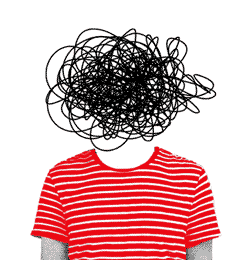Amid Spike in Teen Drinking During Pandemic, Schools Turn to Alateen For Help
The 12 step program is helping teens fight pandemic isolation and despair—sometimes preventing their own substance abuse before it starts

Get stories like this delivered straight to your inbox. Sign up for The 74 Newsletter
Life lines in Austin: Combatting the teen mental health crisis — After two years of fear and isolation among teens across the country, suicide attempts among adolescents are up along with substance abuse rates. Anger and despair are palpable in middle and high school hallways, students say, as the pandemic’s youth mental health crisis rages. But counselors, mentors, and teachers in Austin, Texas, have developed a plan, strategically deploying resources targeting suicide, teen alcoholism, social isolation. The approach is working. Teens and adults say they are seeing glimmers of hope. In this series The 74 looks at three pre-pandemic programs offering lifelines to students in their late-pandemic distress.
Teenagers drinking, always a concern for adults, continued along a different and more troubling trend during the pandemic: Instead of drinking to fit in, teens were drinking alone to dull the pain.
Overall teen drug and alcohol use held steady during the pandemic—for every readily available liquor cabinet there was a canceled party—but in one study teens self-reported a change in where, why, and with whom they drink.
Rather than a social behavior, teens were, like their struggling parents, drinking alone to cope with emotional pandemic fallout.
In Austin, educators are looking to address not only the despair and frustration driving kids to drink in isolation, but the effects of living in a home where parents or siblings are also drinking.
“(The stress of living with an alcoholic) has been a very unmet need, a gap in services,” said Tara Domasco, a social worker with Communities in Schools who co-sponsors the Crockett High School Alateen meeting. “Then you add the pandemic on top.”
In the spring, Crockett co-sponsor Ginger Gannaway gave the high schoolers a writing prompt.
“Just for tonight…” the prompt read. They finished the sentences with their own mantras, goals for their personal recovery. Shared anonymously in keeping with the program’s pledge, the final products paint a poignant picture of the teens’ struggles.
“Just for tonight I won’t let other people’s opinions matter to me. I’m strong enough for what’s coming tomorrow.”
“Just for tonight I’ll try not to get mad at my mom. I’ll forgive her for not choosing me.”
“Just for tonight I will love myself and know that I can overcome what’s to come in the future knowing that I survived my past.”
“Just for tonight” is a modification of the popular 12-step mantra “just for today,” encouraging alcoholics, narcotics abusers, and their loved ones to confront addiction one day at a time. Alateen is designed for young people living with addicts, but many of them have begun using alcohol and drugs themselves. The children of alcoholics are four times more likely to become alcoholics themselves, according to the American Academy of Child and Adolescent Psychiatry.
Support for family members and prevention go hand in hand, Domasco said. As they get to middle school and high school and begin using and abusing themselves, becoming what is referred to in Alateen as a “double winner” with the wounds of life with an addict, and an addiction of their own.
She’s hesitant to label any teenager an “alcoholic,” she said, but a good number of teens do turn to substances themselves to cope with the pain of living with an addicted or mentally unwell family member. “If we can heal and work within the family of origin,” she said, sometimes full-fledged addiction can be avoided.
“Just for tonight I’ll pretend that you’re not my mom and I’ll dream of the mom I want you to be.”
Gannaway was a high school English teacher in 2011, when she started attending Al-Anon meetings in Austin to support her as she coped with her teen son’s substance abuse. Meeting regularly with other family members of alcoholics and addicts helped her regulate her feelings, commit to her own health, and maintain her boundaries.
She remembers thinking about how many teenagers needed such a group, and felt compelled to start one. “I had benefited from Al-Anon, and I knew teenagers,” she said.
Since 1935, Alcoholics Anonymous has used community, reflection, spirituality and structure to help addicted people stay sober. In 1951, loved ones of A.A. members who had been meeting informally, formalized to form Al-Anon, which now has thousands of meetings in over 100 countries. Narcotics Anonymous followed in 1953 Alateen was born four years after that.
Alateen is for students who live with substance abusers. Asking for a ride might reveal to their “qualifier”—the term Alateen uses for the alcoholic or addict in a participant’s life—that the teen is seeking help, and it might not be received well. Plus, when kids show up to a church basement to find adult sponsors and no other kids, she said, they’re not coming back.
“In my head I’m thinking this needs to be in school. This needs to be where kids don’t need a ride to get here,” Gannaway said.
It took a lot of phone calls and clearing of red tape for the Crockett meeting to finally begin in the fall of 2018 with four kids in the Communities in Schools office.
Domasco said students are finding support for more than just the addiction in their lives: Many are confronting other mental health struggles from the pandemic too. “I’ve just heard again and again students saying ‘I’m not myself anymore,” she said.
“Just for tonight, I’ll pretend everything will be okay. I’ll be free to do whatever I want and go about my day.”
Word has started to spread between students that this specific kind of help was available. The 12 to 13-person circle is now too big for Domesco’s office, and the group meets in a classroom. As more kids show up, the adults involved can identify other needs and themes.
Rarely does addiction exist apart from other struggles, Domasco said, and the pandemic seems to have exacerbated them all. “We know that oftentimes in family systems where there is alcohol and substance abuse we also have relational violence.”
She layers the Alateen meeting with other services specifically targeting abusive relationships, as well as nutritional support programs, as often the homes of addicts can become food insecure as limited income is spent on drugs and alcohol.
Sometimes it works the other way around. A student is referred to her for academic struggles or behavioral issues. During intake for other issues Domesco asks about drugs and alcohol in the home, adding Alateen to her recommended services, if appropriate.
Gannaway, who was initially shocked to see how few Alateen groups existed in Austin, sees the success of the Crockett group as proof that schools are the best place to host the groups, where professionals like Domesco and other services are all within arms reach. “It’s kind of blossomed into what we think the kids need. My dream is that every school in this city would have Alateen available to the students.”
Rebekah Ozuna, who works for Austin ISD, overseeing programs funded through the Department of Justice grant that funds Alateen at Crockett, agrees.
“One of the reasons I think Alateen is ready to expand and has been really successful before, during, and after the pandemic, is that it’s flexible to people’s needs,” she said.
But she doesn’t see Alateen as the panacea for everything weighing kids down. It’s not just the coronavirus pandemic, she said, kids today are growing up amid other epidemics as well: opioids, gun violence, and cyberbullying. Feeling safe at school—which more and more kids say they do not—is going to require a multi-layer effort and “deep, deep connection,” Ozuna said.
Get stories like these delivered straight to your inbox. Sign up for The 74 Newsletter

;)
